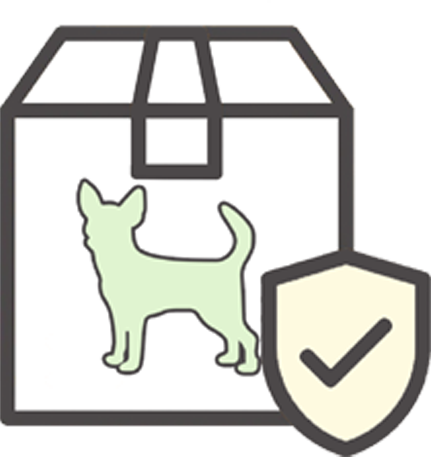Traveling Basics with Your Dog
Thursday, December 29, 2016 05:56:33 PM America/Los_Angeles
Dogs are considered as part of the family so it's only natural that when you're planning a trip, Fido will be coming along. Each year, many families go on the road with their furry ones to experience new exciting adventures together. By taking a little time to plan beforehand, you can make sure that your vacation will be relaxing and fun for both you and your dog.
Crate travel
Although most people only use crates for house training their dogs, it's useful (and safe!) for transporting your dog in a car. It'll prevent your dog from getting injured in the case of sudden stops and be less of a distraction for you. A few things you'll want to keep in mind is to make sure your dog is exercised before he goes in the crate. That means you'll also need to make sure he gets plenty of potty breaks before he goes in the crate. Make sure to bring a favorite and familiar toy or blankie so that the item will comfort him.

Monika Wisniewska via Shuttersock
Medicating your dog
Drugs should only be given after consultation with your Vet. Dogs get motion sickness and altitude sickness just like humans. Let your vet decide the prescription and amount as the size of the dog dictates the dosage. For higher altitudes, allow the dog, and yourself, time to adjust by not overexerting yourself. Take short walks and relax during this time, strolling along at an even pace. It may take a few days, but you'll avoid problems for your pet and yourself.
Considering the climate
When thinking of a trip that includes your pet, beautiful scenery comes to mind -- but all that shines is not gold. Dogs are particularly susceptible to many of the same maladies that inflict humans. In cold areas, dogs suffer with common problems. The most sensitive parts are the tips of their ears, especially for the long-eared breeds, and the tips of their tails. Streets are often salted to reduce slipping, but create a problem for dogs. Aside from bringing along booties, try Musher's Secret or Pam and apply it to the paws to prevent ice balls and possible frostbite. The same goes for extremely hot climates where the pavement can burn the dog's sensitve paws. Some solutions are Musher's Secret, dog booties/socks, or walking them on grass.

Mariia Masich via Shutterstock
Motion Sickness
On the way, as you travel through beautiful scenery on winding roads, car sickness should come to mind. Look for the common signs of motion sickness: yawning, excessive drooling, vomiting, whining, licking lips. The best way to prevent sickness is to make the ride as comfortable as possible. Have them face forward if possible using a canine seatbelt. Lower your car window a little bit to equalize the air pressure between the inside of the car and outside. Limit your dog's food and water consumption before travel.
First Aid Kit
Always consider a medical kit and bring along bandages, bag balm or Neosporin, a roll of sterile gauze, sterile gauze pads, wide tape, scissors, and tweezers or needle nose pliers. You never know when your furry friend might meet a foraging porcupine with sharp quills. The Humane Society has a list of suggestions that help pet owners decide what they should take depending on where they are traveling.

Kaissa via Shutterstock
As you travel along, make sure your dog has his favorite toys and keep to his regular eating and watering schedule. Planning frequent walks along the way enhances the joy (and at times risk) of the trip for your dog and you too. If both traveler and companion are happy and alert, the trip will always go better. If you have been training to teach your dog to use real grass, don't forget to bring some. You want to bring his home into the car and to the trip.
Dogs like to stick their heads out the window, but keep the windows partially up to prevent any unnecessary accidents. Regarding unnecessary accidents, the pet owner should drive carefully throughout the trip and keep to the speed limits. The idea is to make the pet feel at home as much as possible to alleviate any unnecessary stress for your dog.
The last bit of advice comes easiest -- both for you and your dog. Have fun and enjoy one another. Remember, you are enjoying a special moment together and you should try to make it a great and memorable experience.

